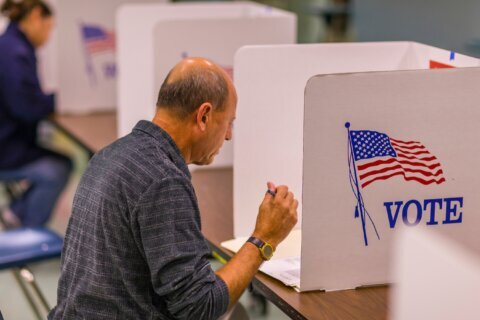A multimillion-dollar investment in an online tutoring service promoted as an “academic booster shot” to help kids catch up wasn’t used by most Fairfax County Public School students last year, according to the findings of a report released by Virginia’s largest school system.
Last spring, the county announced a partnership with Tutor.com that school system leaders said was one part of a larger plan to help students overcome what they called “unfinished learning.” The program offers free tutoring sessions to students in several languages and was paid for using federal stimulus money.
Several D.C.-area school systems offered comparable virtual options to students as part of recovery plans.
But, a majority of Fairfax County students didn’t use the service when it was rolled out at the end of the 2021-22 school year, and many of those who did weren’t the students who needed it most, according to a report from the school system’s Office of Research and Strategic Improvement.
The report, included in school board documents about how the county is spending federal stimulus funds, found that 3,189 students, or 1.6% of the student population, used the resource for academic support. Those who used the service did so for a median of 29 minutes last year, and 72% used it for less than an hour — “an amount of time that is unlikely to yield tangible benefits to student achievement, particularly for those with greater academic need,” the report said.
Fairfax County Public Schools spent $488,000 to make the service available to students and families at the end of last year, and is spending an estimated $2.8 million to offer it to students in each of the next two years.
Among the students who accessed the resource, “Asian, Black and AAP students had greater Tutor.com participation than other groups,” according to the findings.
While former Superintendent Scott Brabrand touted the service as an “academic booster shot,” a majority of students who used Tutor.com were students who didn’t demonstrate academic need.
There wasn’t a “significant” relationship between students identified by their schools as needing academic support and the students who accessed the tutoring service, the report said.
A majority of students who used the service, though, would recommend it, according to the report.
The limited usage, according to the report, could be the result of the program being offered late in the school year, when the school system says students and families may have already been working with other tutoring programs or services.
But the school system’s report says there may be an equity concern, because of “unbalanced participation in the resource by student academic risk and student group.”
In the coming months, the report said, Fairfax County leaders should increase communication about the service as a tool for students who have academic need, continue to monitor usage and follow equity of access to the tutoring service by “student academic risk and student group.”
Because of the limited number of students who have used the tool so far and other factors, the county says it’s not yet able to determine the tutoring program’s impact on academic progress over time or in-school academic progress.








